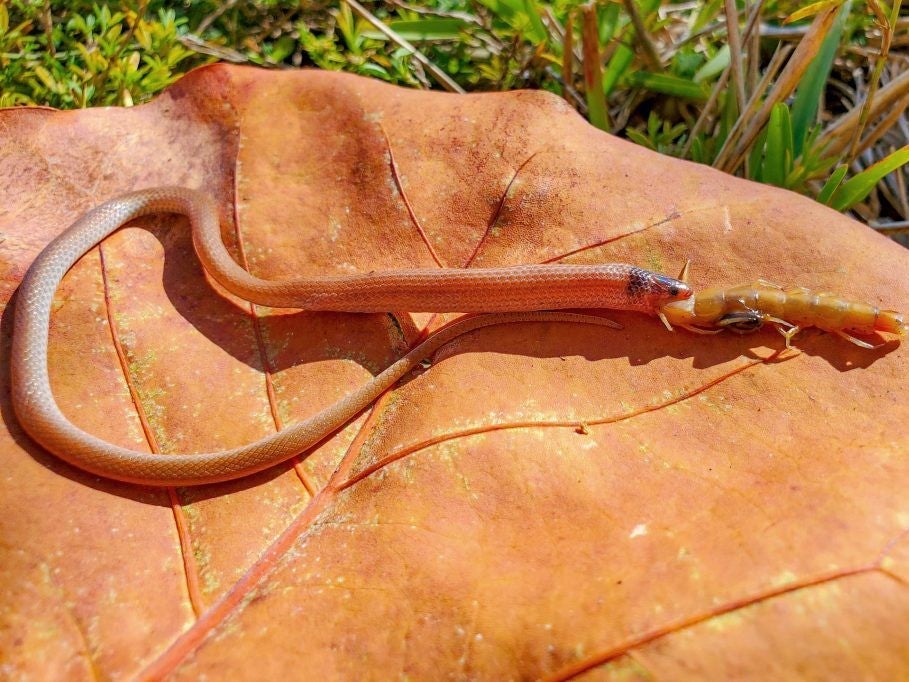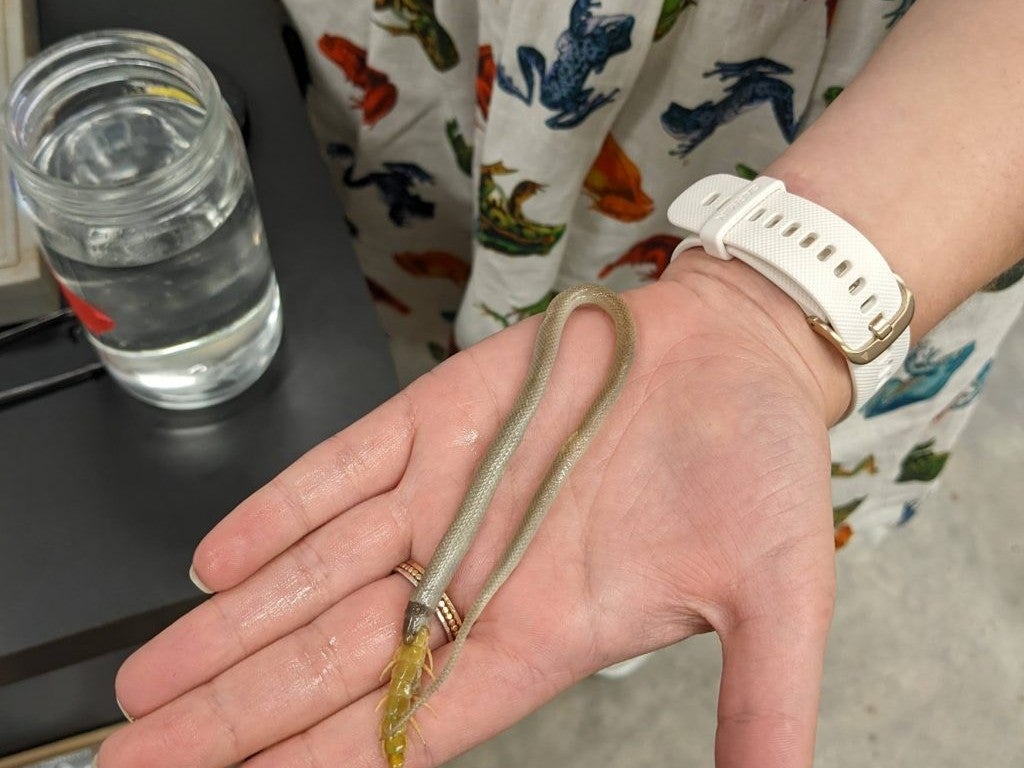America’s rarest snake found choked to death on a centipede
It was the first time in four years a rim rock crowned snake has been seen

Your support helps us to tell the story
From reproductive rights to climate change to Big Tech, The Independent is on the ground when the story is developing. Whether it's investigating the financials of Elon Musk's pro-Trump PAC or producing our latest documentary, 'The A Word', which shines a light on the American women fighting for reproductive rights, we know how important it is to parse out the facts from the messaging.
At such a critical moment in US history, we need reporters on the ground. Your donation allows us to keep sending journalists to speak to both sides of the story.
The Independent is trusted by Americans across the entire political spectrum. And unlike many other quality news outlets, we choose not to lock Americans out of our reporting and analysis with paywalls. We believe quality journalism should be available to everyone, paid for by those who can afford it.
Your support makes all the difference.One of America’s rarest snakes was found in Florida after it choked to death on a giant centipede.
Scientists say that the rim rock crowned snake was discovered in the John Pennekamp Coral Reef State Park in Key Largo.
The snake is so rare that it was the first time one had been seen in four years, according to the Florida Museum of Natural History.
The dead snake, which is non-venomous and endangered, was found by a hiker who alerted park staff and it was taken to the museum for research.
A giant centipede was found jammed halfway through the snake’s mouth, giving scientists their first proof of the reptile’s diet.
An autopsy determined that the size of the centipede was likely what killed the overly ambitious snake, with CT scans showing that the snake’s windpipe was blocked where the centipede was the widest.
The museum’s study was published in the journal Ecology on 4 September.

“It’s extremely rare to find specimens that died while eating prey, and given how rare this species is, I would never have predicted finding something like this. We were all totally flabbergasted,” said Dr Coleman Sheehy, the Florida Museum’s herpetology collection manager.
The species is so rare that scientists rarely get a chance to study them.
“We can’t say for sure whether or not they’re still present in peninsular Florida. Absence of evidence is not evidence of absence, but their habitat has basically been destroyed,” added Dr Sheehy.
Join our commenting forum
Join thought-provoking conversations, follow other Independent readers and see their replies
Comments